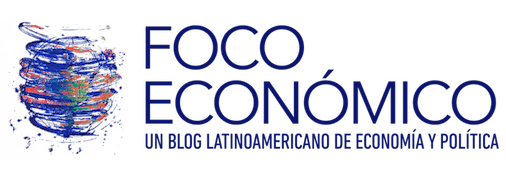Maria Sklodowska was born on November 7th, 1867, in Warsaw, Poland. Her parents were teachers. Poland was not a free country at the time, and Maria lived in the part of the country that was governed by Russia. She was a marvelous little girl – brilliant and full of curiosity. She adored her father, who turned every conversation with his children into a lesson, and she hung on his every word.
When it was time for Maria to go to university, her parents had enough money to send only one of their children and, since Maria’s older brother Jozef was already studying medicine, Maria and her sister, Bronia, had to wait their turn. In any case, the University of Warsaw did not accept women. Maria began to study on her own, and her sister Bronia soon joined her. They decided on a plan: Bronia would go to Paris to study at the Sorbonne while Maria would stay in Poland to earn money for the two of them. Once Bronia had graduated, it would be Maria’s turn. At the age of 18, Maria took a position as a governess. At first, she enjoyed her work, but soon, just like in a novel, she fell in love with the oldest son of the family she was working for. The boy’s parents refused to allow them to marry because Maria was no more than a governess. From that moment on, Maria hated living with and working for the people who had looked on her with such disdain, but she had to keep her promise to Bronia, so she stayed in that job for another year. After that, she worked as a governess for another family. Finally, Bronia finished her university studies, married and wrote to Maria, inviting her to move to Paris to live with her while she attended the Sorbonne. After three years of intense study, Maria, who now went by the name Marie, took her final examinations in science. Only two women graduated that year, and Marie was at the top of her class.
Following her graduation, she went on to study mathematics at the Sorbonne. Her professor, Gabriel Lippmann, found her a job in one of the university’s laboratories, where she did research on magnetism and steel. Marie struggled with the experiments and was unable to produce the sought-after results. Friends tried to help her by introducing her to Pierre Curie, a scientist who had become famous at a very young age. When Pierre was just 21 years old, he and his brother had discovered that quartz crystals could hold an electric charge. After that, Pierre invented a scientific instrument called an electrometer, which could be used to measure very small amounts of electricity. Marie needed his electrometer in order to obtain better results with her experiments. On July 2nd 1895, Marie became Marie Curie.
Marie and Pierre began to work together. They followed up the work of Henri Becquerel, who discovered radioactivity, although he never used that term. In fact, it was Marie who gave that name to the radiation given off by certain elements, and she was also the one who realized that many chemicals are radioactive. Radioactivity is a special kind of energy that is generated inside the atoms of certain metals or chemicals. A radioactive element gives off energy until the source of that energy is depleted. Marie built on the findings of Becquerel and began to experiment with uranium. Then she did something brilliant that changed science forever: she decided to experiment with a mineral called “pitchblende” (now known as uraninite), which contains a large amount of uranium and other metals. Marie discovered that these rocks emitted more radiation than uranium did. How could that be? Marie concluded that there had to be another metal mixed in with the pitchblende, which she chose to call polonium. She was unable to demonstrate that polonium existed in isolation from pitchblende, however, because the quantity of polonium in the rocks was too small. While she was trying to prove that polonium was indeed present, however, she encountered something that was even more intriguing. Pitchblende contained yet another element. She and Pierre called it radium. Radium is so potent that even a small amount of it is a million times more radioactive than uranium is. Sadly, as Marie was surrounded by radium, she began to fall ill.
After Marie had finished her thesis, she obtained a doctoral degree from the Sorbonne. Shortly after that, Marie and Pierre received a letter telling them that they had won the Nobel Prize in Physics. Pierre wrote back to the Committee and explained that they could not attend the ceremony. Marie was ill, and he was too busy with his classes. They shared the prize with Becquerel, who travelled to Sweden to receive the price. In his speech, Becquerel made it seem that he had done all the work (not at all surprisingly). Nevertheless, the Curies soon became famous. All the newspapers wrote about them. Their readers were fascinated with Madame Curie: a woman scientist!
Unfortunately, a few years later, Pierre died in an accident. It was then that the Sorbonne invited Madame Curie to assume the tenured professorship that had been given to Pierre just a few years before that. It was a sorry victory for Marie. A few years later, Marie fell in love with one of Pierre’s students, Paul Langevin, who was also a renowned scientist. Paul sent love letters to Marie, and she responded. One day, Paul’s wife found the letters. Marie tried to persuade Paul to divorce his wife, but he refused. At that point, the relationship between Marie and Paul cooled. One year later, however, they both attended an important conference in Brussels, and Paul’s wife was infuriated. She sent Marie’s and Paul’s love letters to a Parisian newspaper, which published them, creating a huge scandal. It was a particularly inopportune moment for this to happen because, that very same week, Marie had received a letter announcing that she was to receive another Nobel Prize, this time in chemistry, and that she was the sole recipient. Two Nobel Prizes in different scientific disciplines certainly earn her the distinction afforded to her in the title of this post.
A few weeks later, the Nobel Prize committee sent another letter to Marie. In the wake of all the stories that had appeared in the press about her relationship with Paul Langevin, the committee wanted Marie to turn the prize down. Marie did not accede and instead responded that her private life was private and that she would be going to Stockholm to accept the prize. Marie was of the view that they were giving her the Nobel Prize for her scientific achievements. Nothing else should matter.
In 1914, the University of Paris founded the Curie Institute. Marie was the first director. The second was her daughter, Irene, who also went on to win the Nobel Prize in chemistry together with her husband, Frederic Joliot.
In May 1934, Marie began to feel very weak. Radium was finally beginning to win the battle. She died on July 4th at the age of 66. In 1995, the French government decided to move the graves of Marie and Pierre to the Pantheon. President Mitterrand attended the ceremony and delivered a very moving address. Marie’s other daughter, Eve, who wrote a beautiful essay about her mother’s life, was present. Marie’s work changed the world, and her name will live on forever.



